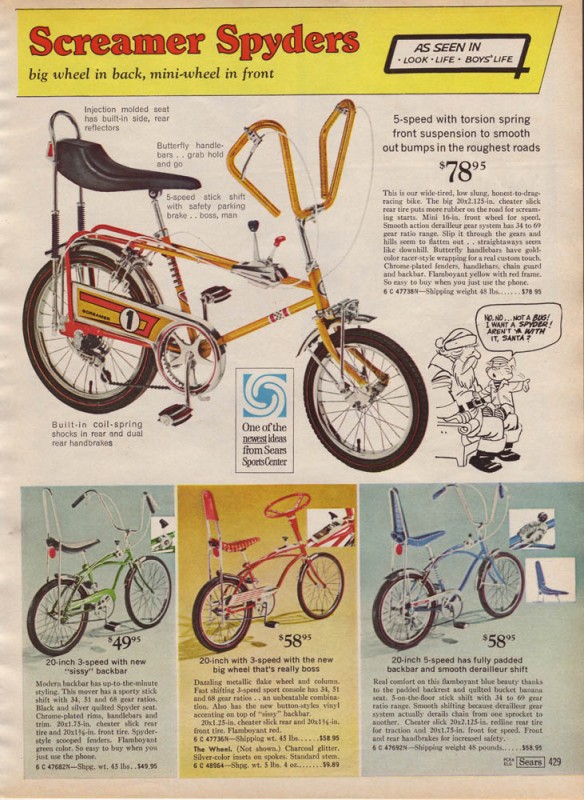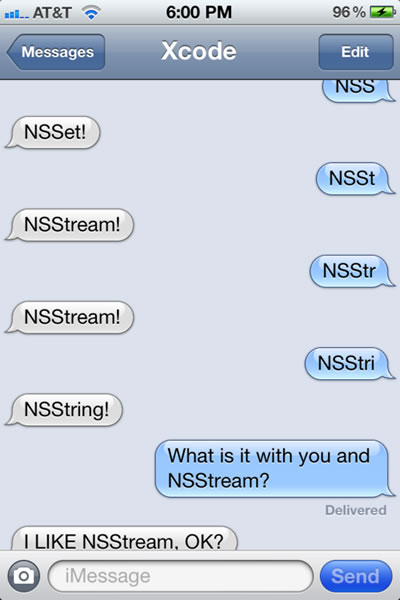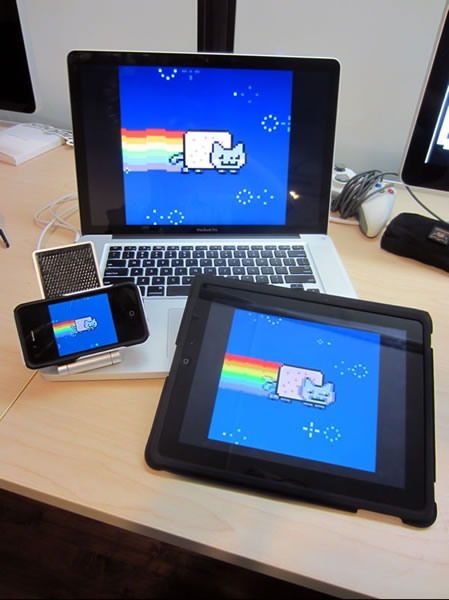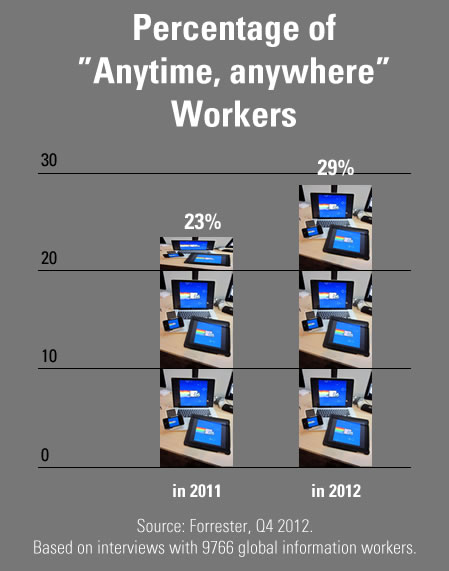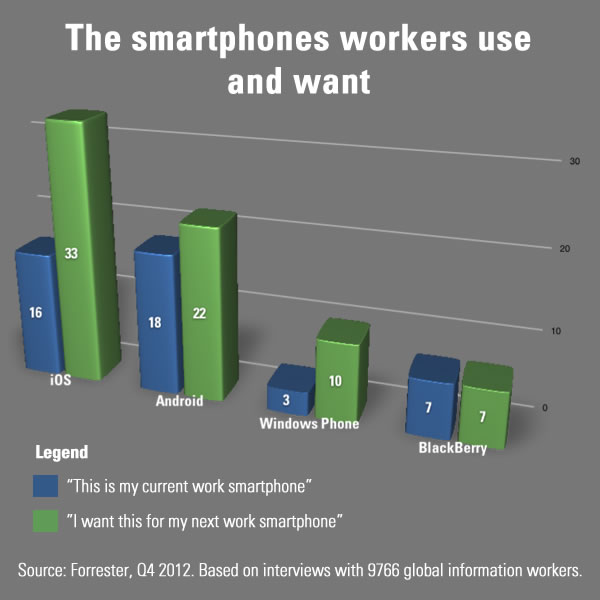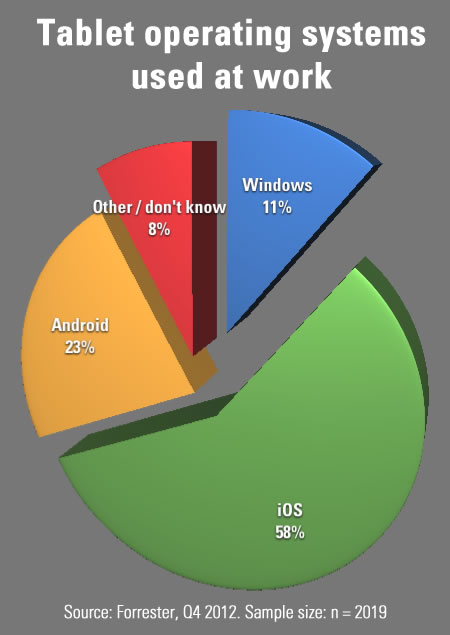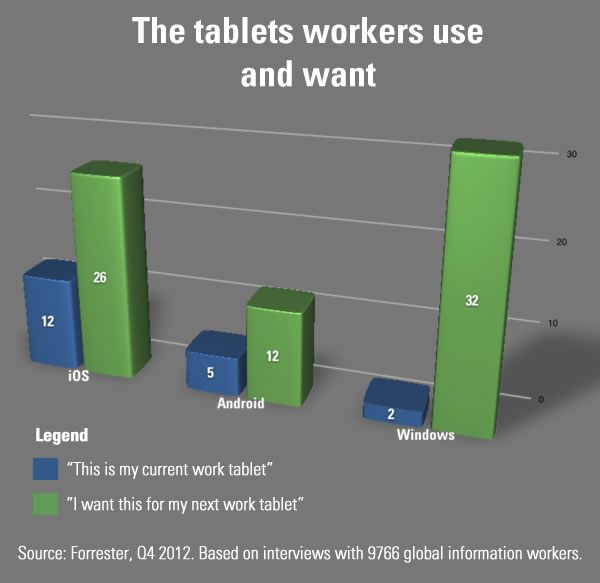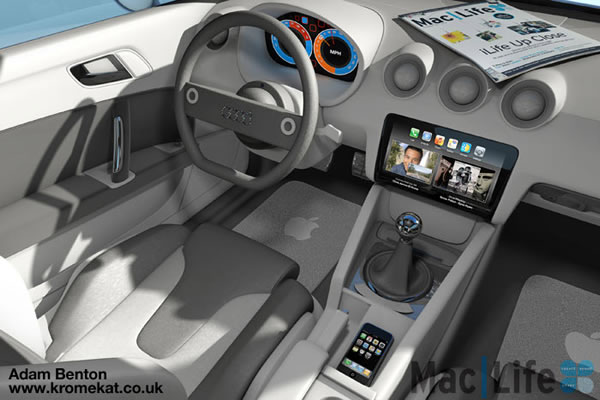
In the big story is about Apple’s rumoured “iWatch”, Business Insider took notice of a Steve Jobs idea mentioned in passing:
In a meeting in his office before he died, Steven P. Jobs, Apple’s co-founder and former chief executive, told John Markoff of The New York Times that if he had more energy, he would have liked to take on Detroit with an Apple car.
This sounds like a perfect time to remind everyone about those old “If operating systems were cars” jokes.
The Classic
The original humour piece went something like this. As you can tell by the names of some of the operating systems, this one’s pretty old.
If operating systems ran your car, and you needed to go shopping:
- MS-DOS: You get in the car and try to remember where you put the keys.
- Windows: You get in the car and drive to the shops very slowly, because attached to the back of the car is a freight train.
- Macintosh System 7: You get in the car to drive to the shops and the car drives you to church.
- Unix: You get in the car and type ‘grep store’. After reaching speeds of 200 mph en route, you arrive at the barbershop.
- Windows NT: You get in the car and write a letter that says “go to the shops”. Then you get out of the car and nail the letter to the dashboard.
- Taligent/Pink: You walk to the store with Ricardo Montalban who tells you how wonderful it will be when he can fly you to the store in his LearJet.
- OS/2: After fuelling up with 6000 gallons of fuel, you get in the car and drive to the shops with a motorcycle escort and a marching band in procession. Halfway there, the car blows up, killing everyone.
- S/36 SSP: You get in the car and drive to the shops. Halfway there you run out of fuel. While walking the rest of the way, you are run over by kids with mopeds.
- AS/400: An attendant kicks you into the car and then drives you to the shops where you get to watch everyone else buying filets mignon.
The Photo Variant
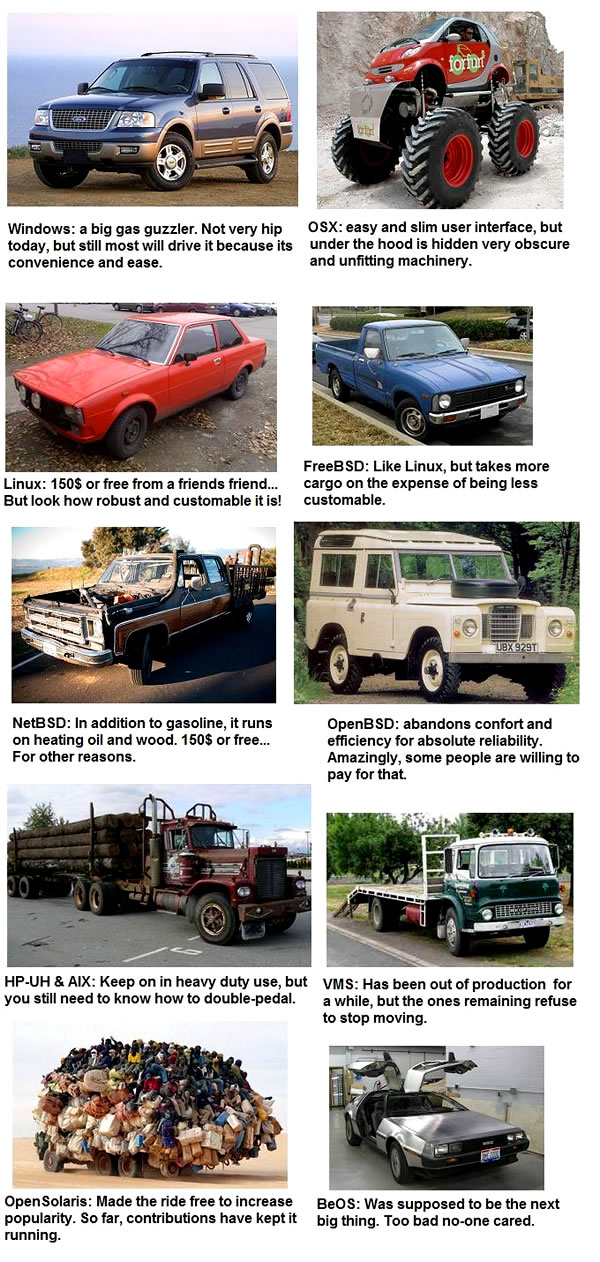
The Gearshift Variant
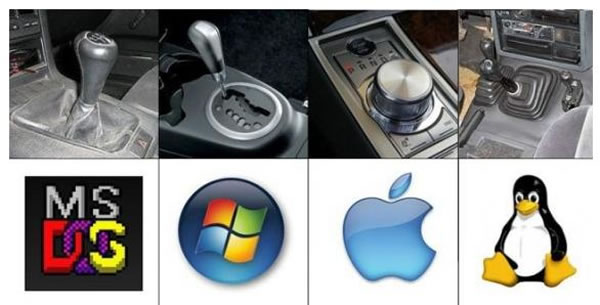
The “Can You Get Under the Hood” Variant
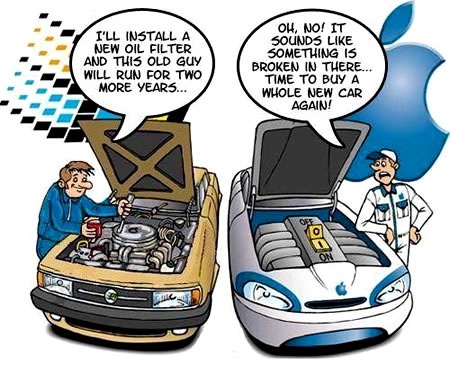

The Story from Neal Stephenson’s In the Beginning was the Command Line

When the Clown Prince of Accordion met the Dark Prince of Hacker Fiction.
For the story behind this pictures, see here, here and here.
And finally, here’s an excerpt from Neal Stephenson’s In the Beginning was the Command Line. It was his 1999 essay in which he proposed that proprietary operating systems weren’t going to be profitable ventures for much longer because the space was about to be taken over by free software. Hey, it sort of came true, and it’s not as far off as Eric S. Raymond’s prediction in his essay, The Revenge of the Hackers:
Windows 2000 will be either canceled or dead on arrival. Either way it will turn into a horrendous train wreck, the worst strategic disaster in Microsoft’s history.
Near the beginning of In the Beginning, Stephenson compared the big desktop OSs of the time to cars:
- Windows 9x to station wagons
- Windows NT to off-road vehicles
- Mac OS (remember, this is pre-OS X) to European sedans
- BeOS to the Batmobile
- Linux to tanks that you could customize or get hackers to customize for you.
Here’s the part in which he tells his version of the “If operating systems were cars” joke. Enjoy!
MGBs, Tanks and Batmobiles
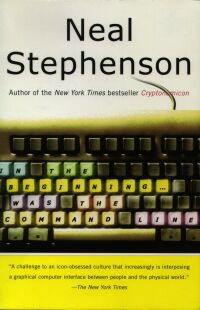 Around the time that Jobs, Wozniak, Gates, and Allen were dreaming up these unlikely schemes, I was a teenager living in Ames, Iowa. One of my friends’ dads had an old MGB sports car rusting away in his garage. Sometimes he would actually manage to get it running and then he would take us for a spin around the block, with a memorable look of wild youthful exhiliration on his face; to his worried passengers, he was a madman, stalling and backfiring around Ames, Iowa and eating the dust of rusty Gremlins and Pintos, but in his own mind he was Dustin Hoffman tooling across the Bay Bridge with the wind in his hair.
Around the time that Jobs, Wozniak, Gates, and Allen were dreaming up these unlikely schemes, I was a teenager living in Ames, Iowa. One of my friends’ dads had an old MGB sports car rusting away in his garage. Sometimes he would actually manage to get it running and then he would take us for a spin around the block, with a memorable look of wild youthful exhiliration on his face; to his worried passengers, he was a madman, stalling and backfiring around Ames, Iowa and eating the dust of rusty Gremlins and Pintos, but in his own mind he was Dustin Hoffman tooling across the Bay Bridge with the wind in his hair.
In retrospect, this was telling me two things about people’s relationship to technology. One was that romance and image go a long way towards shaping their opinions. If you doubt it (and if you have a lot of spare time on your hands) just ask anyone who owns a Macintosh and who, on those grounds, imagines him- or herself to be a member of an oppressed minority group.
The other, somewhat subtler point, was that interface is very important. Sure, the MGB was a lousy car in almost every way that counted: balky, unreliable, underpowered. But it was fun to drive. It was responsive. Every pebble on the road was felt in the bones, every nuance in the pavement transmitted instantly to the driver’s hands. He could listen to the engine and tell what was wrong with it. The steering responded immediately to commands from his hands. To us passengers it was a pointless exercise in going nowhere–about as interesting as peering over someone’s shoulder while he punches numbers into a spreadsheet. But to the driver it was an experience. For a short time he was extending his body and his senses into a larger realm, and doing things that he couldn’t do unassisted.
The analogy between cars and operating systems is not half bad, and so let me run with it for a moment, as a way of giving an executive summary of our situation today.
Click the photo to see it at full size.
Imagine a crossroads where four competing auto dealerships are situated. One of them (Microsoft) is much, much bigger than the others. It started out years ago selling three-speed bicycles (MS-DOS); these were not perfect, but they worked, and when they broke you could easily fix them.
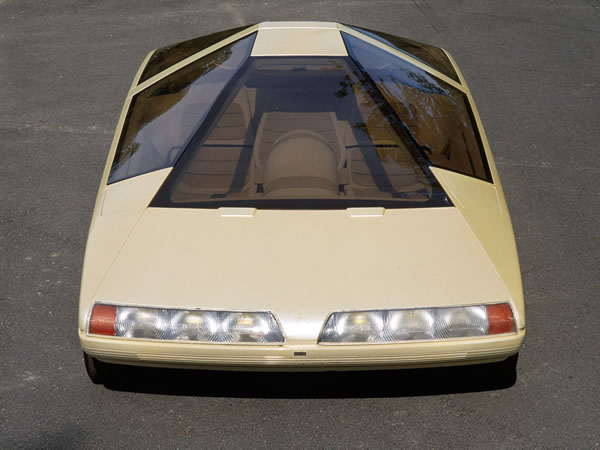
There was a competing bicycle dealership next door (Apple) that one day began selling motorized vehicles–expensive but attractively styled cars with their innards hermetically sealed, so that how they worked was something of a mystery.
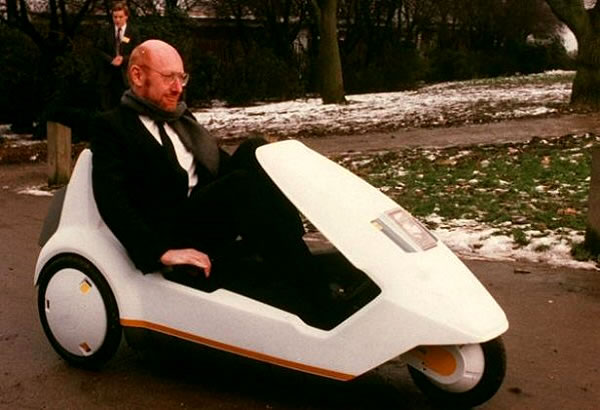
The big dealership responded by rushing a moped upgrade kit (the original Windows) onto the market. This was a Rube Goldberg contraption that, when bolted onto a three-speed bicycle, enabled it to keep up, just barely, with Apple-cars. The users had to wear goggles and were always picking bugs out of their teeth while Apple owners sped along in hermetically sealed comfort, sneering out the windows. But the Micro-mopeds were cheap, and easy to fix compared with the Apple-cars, and their market share waxed.
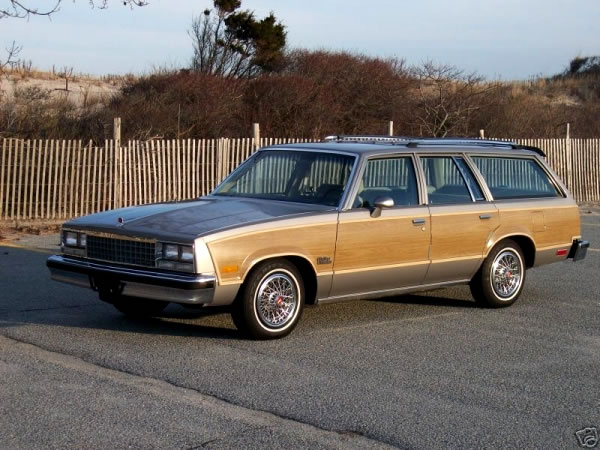
Eventually the big dealership came out with a full-fledged car: a colossal station wagon (Windows 95). It had all the aesthetic appeal of a Soviet worker housing block, it leaked oil and blew gaskets, and it was an enormous success.
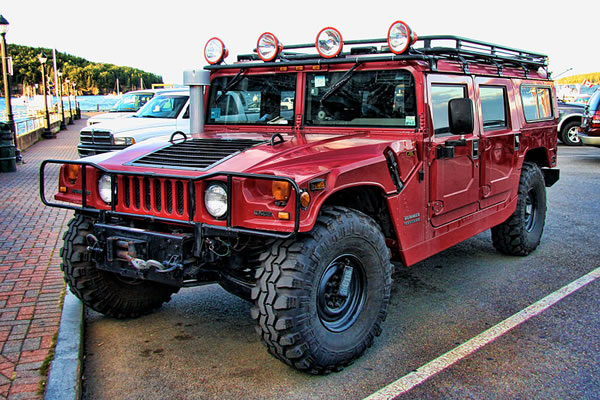
A little later, they also came out with a hulking off-road vehicle intended for industrial users (Windows NT) which was no more beautiful than the station wagon, and only a little more reliable.
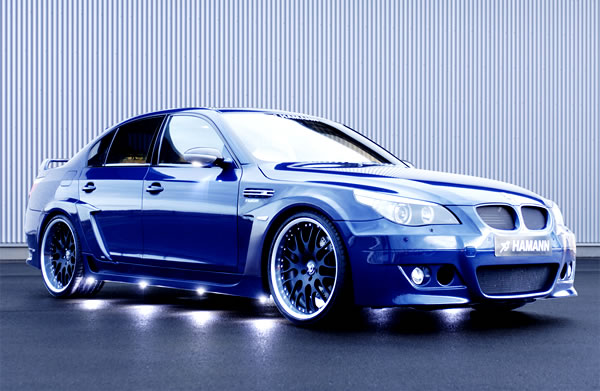
Since then there has been a lot of noise and shouting, but little has changed. The smaller dealership continues to sell sleek Euro-styled sedans and to spend a lot of money on advertising campaigns. They have had GOING OUT OF BUSINESS! signs taped up in their windows for so long that they have gotten all yellow and curly. The big one keeps making bigger and bigger station wagons and ORVs.
On the other side of the road are two competitors that have come along more recently.

One of them (Be, Inc.) is selling fully operational Batmobiles (the BeOS). They are more beautiful and stylish even than the Euro-sedans, better designed, more technologically advanced, and at least as reliable as anything else on the market–and yet cheaper than the others.

With one exception, that is: Linux, which is right next door, and which is not a business at all. It’s a bunch of RVs, yurts, tepees, and geodesic domes set up in a field and organized by consensus. The people who live there are making tanks. These are not old-fashioned, cast-iron Soviet tanks; these are more like the M1 tanks of the U.S. Army, made of space-age materials and jammed with sophisticated technology from one end to the other. But they are better than Army tanks. They’ve been modified in such a way that they never, ever break down, are light and maneuverable enough to use on ordinary streets, and use no more fuel than a subcompact car. These tanks are being cranked out, on the spot, at a terrific pace, and a vast number of them are lined up along the edge of the road with keys in the ignition. Anyone who wants can simply climb into one and drive it away for free.
Customers come to this crossroads in throngs, day and night. Ninety percent of them go straight to the biggest dealership and buy station wagons or off-road vehicles. They do not even look at the other dealerships.
Of the remaining ten percent, most go and buy a sleek Euro-sedan, pausing only to turn up their noses at the philistines going to buy the station wagons and ORVs. If they even notice the people on the opposite side of the road, selling the cheaper, technically superior vehicles, these customers deride them cranks and half-wits.
The Batmobile outlet sells a few vehicles to the occasional car nut who wants a second vehicle to go with his station wagon, but seems to accept, at least for now, that it’s a fringe player.
The group giving away the free tanks only stays alive because it is staffed by volunteers, who are lined up at the edge of the street with bullhorns, trying to draw customers’ attention to this incredible situation. A typical conversation goes something like this:
Hacker with bullhorn: “Save your money! Accept one of our free tanks! It is invulnerable, and can drive across rocks and swamps at ninety miles an hour while getting a hundred miles to the gallon!”
Prospective station wagon buyer: “I know what you say is true…but…er…I don’t know how to maintain a tank!”
Bullhorn: “You don’t know how to maintain a station wagon either!”
Buyer: “But this dealership has mechanics on staff. If something goes wrong with my station wagon, I can take a day off work, bring it here, and pay them to work on it while I sit in the waiting room for hours, listening to elevator music.”
Bullhorn: “But if you accept one of our free tanks we will send volunteers to your house to fix it for free while you sleep!”
Buyer: “Stay away from my house, you freak!”
Bullhorn: “But…”
Buyer: “Can’t you see that everyone is buying station wagons?”
